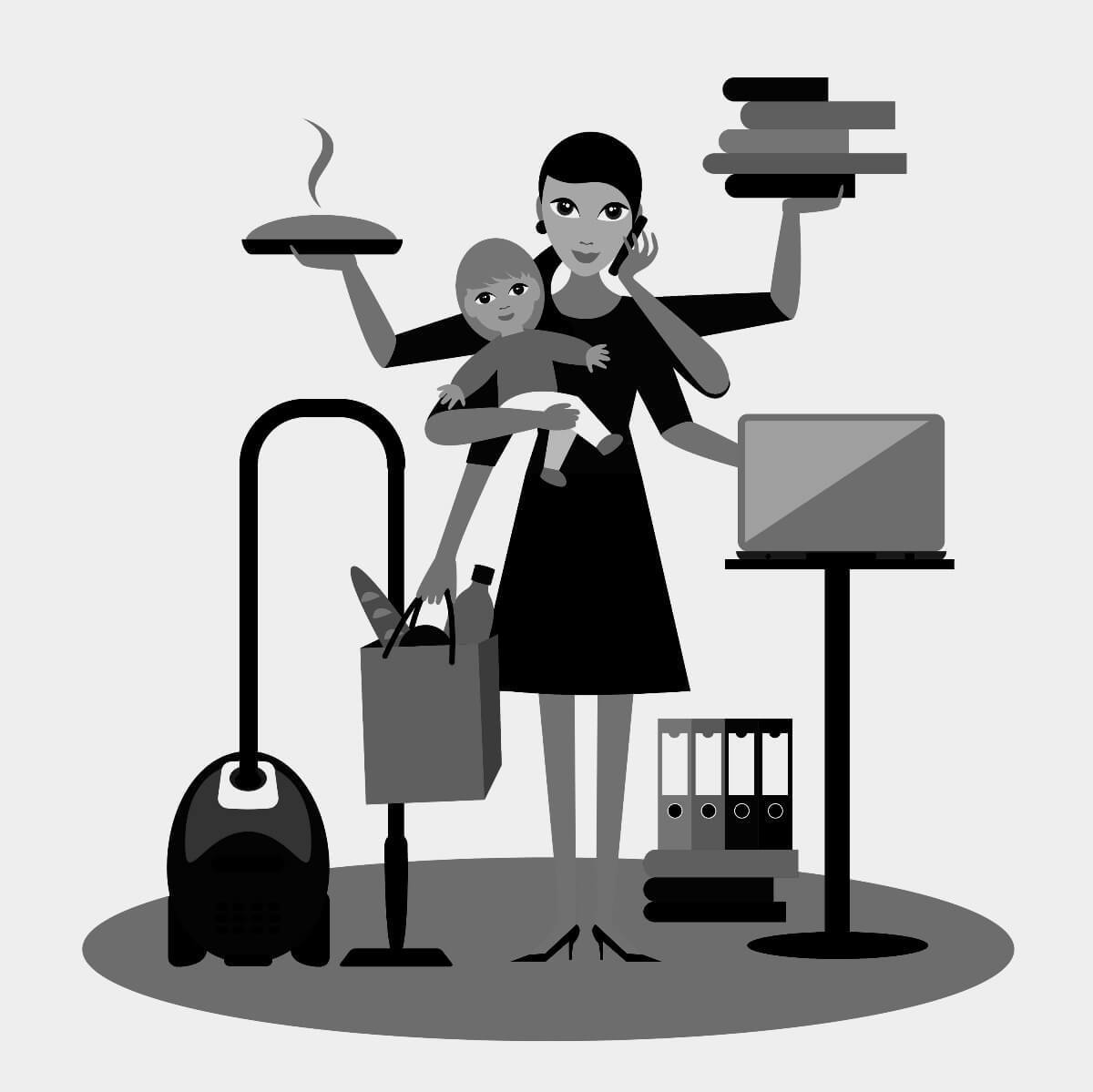Motherhood has long been a foundational pillar in the tapestry of human society, intricately connected to our evolving cultural norms and values. As contemporary society shifts under the weight of technological advances, economic pressures, and ideological transformations, the role and perception of motherhood have undergone significant changes. Modern society’s values concerning work, gender equality, and individualism have reframed motherhood from a primarily domestic role to one that intersects various aspects of public and private life.

In the midst of these cultural changes, the expectations and experiences of mothers are marked by an increased focus on balance and fulfillment. Women today navigate the complex landscape of expectations that encompasses professional aspirations, personal well-being, and the nurturing of their children. This dynamic often requires a delicate negotiation between personal choices and societal values, revealing the intricate interplay between individual desires and collective ideals.
The role and identity of motherhood continue to evolve, reflective of broader societal shifts and the ongoing discourse around women’s rights and their place within the modern world. The narrative of motherhood is being reshaped by policies, personal experiences, and diverse narratives presented through media, pointing toward a future where the concept of motherhood may differ greatly from historical precedents.
Key Takeaways
- Contemporary societal values have transformed the perception and reality of motherhood.
- A balance between professional ambitions and parental responsibilities is central to the modern maternal experience.
- The evolution of motherhood is influenced by policies and diverse narratives, signaling shifts in future societal roles.
Historical Perspectives on Motherhood

The evolution of motherhood has always been intricately connected with society’s broader historical and cultural transformations.
Changing Roles Through History
In ancient cultures, motherhood was deeply rooted in the fabric of society, often revered and linked to the Earth’s fertility. Mother goddesses were worshiped, signifying the importance of women as life givers. As civilizations transitioned from hunter-gatherer societies to agrarian ones, my role shifted, emphasizing the nurturing and caring aspects within the family unit.
Industrialization and Women’s Labour
With the dawn of industrialization, the role of mothers underwent significant changes. Women were suddenly thrust into the workforce, and the balance between work and family life became a critical issue. I began to witness a rise in child labor, prompting social reformers to advocate for women’s and children’s rights. This period marked a move towards recognizing my economic contributions both inside and outside the home.
- Pre-Industrialization: Primarily homemakers and caregivers.
- Post-Industrialization: Dual roles in both home and workforce.
The Feminist Movement and Motherhood
The feminist movement was a turning point in the narrative of motherhood. I actively sought equal rights and opportunities, which also included reproductive rights and a deconstruction of traditional motherhood ideals. Although the movement faced criticism, it was instrumental in opening new avenues for me to balance motherhood with personal and professional aspirations.
- Key Achievements:
- Legal protection for pregnancy and maternity leave.
- Recognition of the need for childcare solutions.
Modern Society’s Values and Motherhood

In my examination, I consider how modern values reshape the maternal experience, factoring in work demands, technological advances, and cultural pressures.
Work-Life Balance Challenges
Work-life balance is a significant challenge for mothers today. I often see working mothers juggling their professional responsibilities with their parenting role, struggling to find time for both. Companies have slowly begun to integrate more flexible working arrangements, but there is still a heavy reliance on mothers to adapt to demanding schedules.
- Flexibility in the Workplace: Many businesses now offer telecommuting and flexible hours.
- Paid Maternity Leave: Despite improvements, the U.S. lags behind other developed nations in offering paid leave.
The Impact of Technology on Parenting
Technology’s influence on parenting is profound and double-edged. On one hand, it provides educational resources and connectivity. On the other, I observe it creates concerns over screen time and online safety for children.
- Educational Resources: Apps and online platforms offer learning opportunities for children.
- Screen Time: The American Academy of Pediatrics recommends limiting screen time, and suggesting interactive, high-quality content when screen use is allowed.
Cultural Expectations and Pressure
Cultural expectations place enormous pressure on mothers to excel in both their careers and at home. From my perspective, societal norms often glorify the idea of the ‘perfect’ mother, who is expected to uphold an ideal balance without compromising any aspect of her life.
- Social Media: Presents idealized images of motherhood that can be unrealistic.
- Community Support: I note that access to community resources can alleviate some of the pressures faced by mothers.
Policies Affecting Motherhood

I will explore several policies that directly impact motherhood, including legislation on leave, support systems, and healthcare access. These policies are critical in shaping how society values and supports mothers and their children.
Maternity and Paternity Leave Laws
In the United States, the Family and Medical Leave Act (FMLA) provides eligible employees with up to 12 weeks of unpaid leave per year. However, only about 60% of workers are covered, and many cannot afford to take unpaid leave. Some states have enacted their own laws to offer paid leave benefits. For example, California provides up to 6 weeks of paid family leave at approximately 55-70% of the worker’s salary.
- California: Up to 6 weeks, 55-70% pay
- New York: Up to 12 weeks, 50-67% pay depending on earnings
- New Jersey: Up to 12 weeks, two-thirds of wages up to a certain limit
Childcare Support Systems
Childcare costs can be a significant burden on families. The Child Care and Development Block Grant (CCDBG) aids low-income families in accessing childcare to work or attend school. Additionally, the Tax Cuts and Jobs Act of 2017 increased the Child Tax Credit to $2,000 per qualifying child, which can help offset some childcare expenses.
- Child Care Subsidy: CCDBG provides funds to states.
- Tax Credit: Up to $2,000 per child through the Child Tax Credit.
Healthcare Access for Women and Children
The Affordable Care Act (ACA) expanded Medicaid and provided subsidies to make health insurance more affordable, which is vital for prenatal, maternity, and pediatric care. The Women’s Health and Cancer Rights Act mandates coverage of breast reconstruction post-mastectomy, underscoring the importance of comprehensive healthcare for women.
- Medicaid: Expanded under ACA to support lower-income families.
- Health Insurance Subsidies: Available to qualifying individuals and families to lower insurance premiums.
Personal Narratives and Media Representation

Media representation and personal narratives shape society’s understanding of motherhood. They influence perceptions and set standards for what is considered normal or ideal in various cultures.
Portrayal of Mothers in Media
I observe that media often depicts mothers through a narrow lens, focusing on their nurturing role while sidelining their individuality. Television shows and films typically show mothers as secondary characters whose lives revolve around their children and domestic responsibilities. This portrayal strongly suggests that a woman’s primary purpose is tied to her familial roles.
Influence of Social Media on Motherhood
Social media platforms serve as a battleground where ideals of perfect motherhood clash with the unvarnished realities of daily life. On platforms like Instagram, curated images and stories depict spotless homes and well-behaved children, while Pinterest provides an endless supply of do-it-yourself motherhood projects. These images can create pressure to meet unrealistic standards, impacting my self-perception as a mother and the way society views motherhood.
Celebrity Culture and Motherhood
Celebrities often share glimpses of motherhood, which can affect public expectations. When celebrities post about their pregnancy experiences and parenting styles, they inadvertently set trends. For example, “bounce-back” body narratives post-childbirth portray a rather unattainable fitness goal for many. However, some celebrities use their influence to showcase a broader range of maternal experiences, advocating for issues like maternity leave and postpartum depression.
Future Directions and Societal Changes
I will explore the critical trends and transformations shaping women, motherhood, and the values of our modern society.
Advancements in Reproductive Health
Reproductive technologies are rapidly advancing, increasing access to and the success rates of in vitro fertilization (IVF) and genetic screening methods. In the near future, I foresee the rise of less invasive fertility treatments and enhanced prenatal care that will significantly reduce health risks for both mothers and babies.
Shifting Family Structures
Modern society is embracing a variety of family units beyond the traditional nuclear family. Single parenthood and same-sex couple parenting are more visible and legally supported. In my observation, societal norms continue to evolve, increasingly recognizing and legitimizing diverse family formations.
Evolving Workplace Dynamics
The workplace is adapting to mothers’ needs through policy reforms, such as longer maternity leaves and flexible working arrangements. I expect a continual push for gender equality, with growing support for fathers’ paternity leave to reinforce the shift towards shared parenting responsibilities.
Frequently Asked Questions
As we explore the dynamic between women, motherhood, and the evolving values of modern society, these frequently asked questions provide insights into the current discourse and research findings on the subject.
How does modern society perceive the role of motherhood and career balance?
Modern society often views the balance between motherhood and career as a significant challenge. The expectation is that women should seamlessly manage both roles, but in reality, achieving a perfect balance is complex and varies greatly across different cultures and individual preferences.
What psychological changes are associated with motherhood according to recent research?
Recent research indicates that motherhood often leads to psychological changes such as enhanced emotional awareness, and adaptation skills, but it can also come with an increased risk of stress and mental health challenges, such as postpartum depression.
In what ways have societal expectations of mothers evolved in the modern era?
Societal expectations of mothers have evolved to encompass a wider array of roles and responsibilities. While traditional caregiving and homemaking roles remain, there is also an increasing expectation for mothers to maintain professional careers and personal aspirations.
What is the impact of motherhood on women’s professional advancement opportunities?
Motherhood can impact professional advancement opportunities, as it may lead to career interruptions or the need for flexible work arrangements. This can influence career trajectory and earnings potential, often contributing to the gender pay gap.
How is the value of motherhood in contemporary society compared to past generations?
Contemporary society often values motherhood by acknowledging the diverse and integrative roles mothers play. However, compared to past generations, there is more discussion and debate around the value of motherhood being equated to a woman’s choice and identity beyond familial roles.
What challenges do mothers face in modern society that are different from historical norms?
Mothers in modern society face unique challenges that include balancing work-life pressures with the omnipresence of technology and social media. Additionally, there is a greater focus on parenting styles and the pressure to meet changing standards of child-rearing amidst an information-rich era.